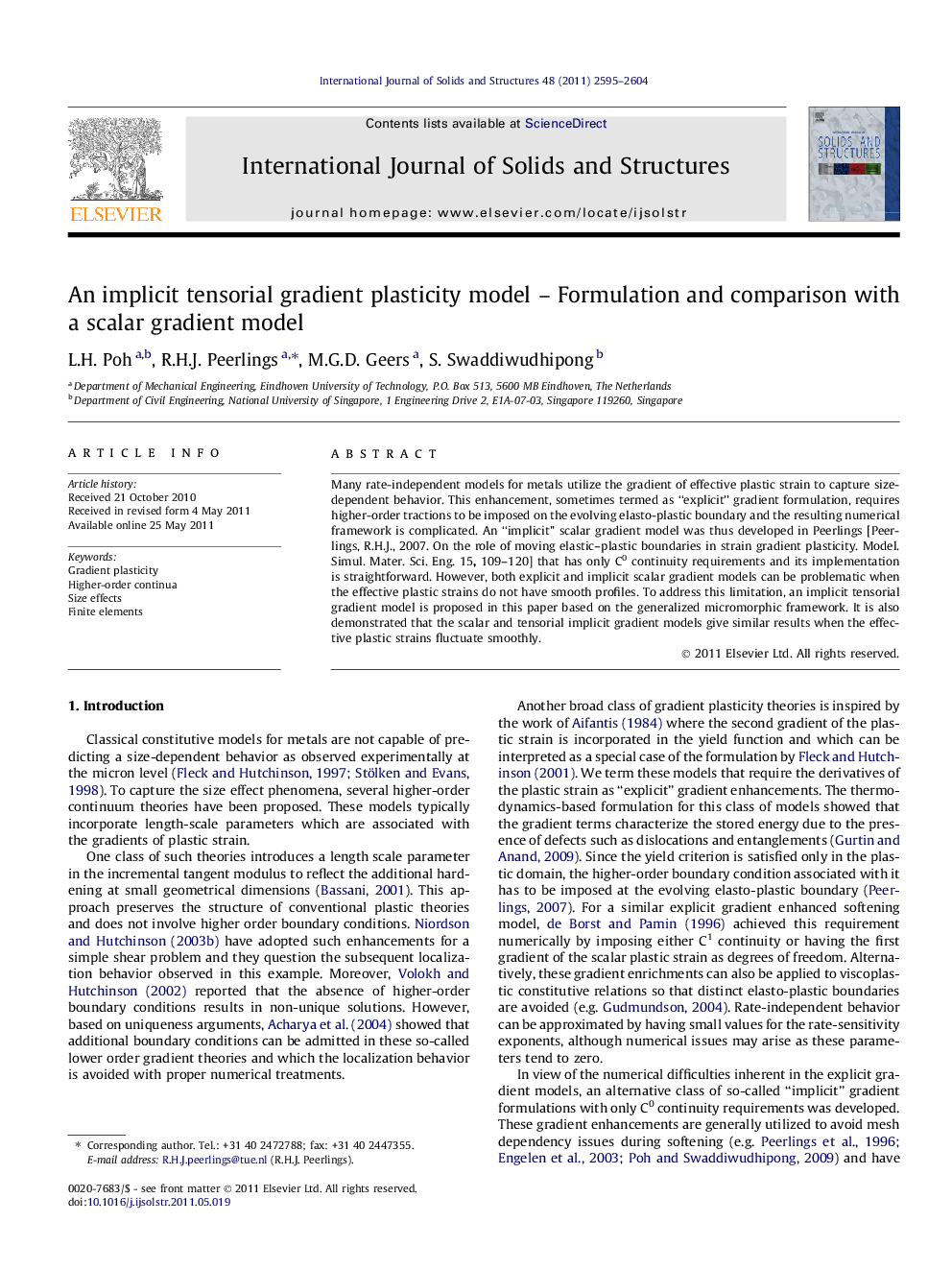| Article ID | Journal | Published Year | Pages | File Type |
|---|---|---|---|---|
| 278680 | International Journal of Solids and Structures | 2011 | 10 Pages |
Many rate-independent models for metals utilize the gradient of effective plastic strain to capture size-dependent behavior. This enhancement, sometimes termed as “explicit” gradient formulation, requires higher-order tractions to be imposed on the evolving elasto-plastic boundary and the resulting numerical framework is complicated. An “implicit” scalar gradient model was thus developed in Peerlings [Peerlings, R.H.J., 2007. On the role of moving elastic–plastic boundaries in strain gradient plasticity. Model. Simul. Mater. Sci. Eng. 15, 109–120] that has only C0 continuity requirements and its implementation is straightforward. However, both explicit and implicit scalar gradient models can be problematic when the effective plastic strains do not have smooth profiles. To address this limitation, an implicit tensorial gradient model is proposed in this paper based on the generalized micromorphic framework. It is also demonstrated that the scalar and tensorial implicit gradient models give similar results when the effective plastic strains fluctuate smoothly.
